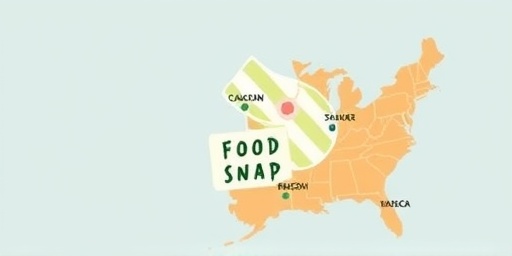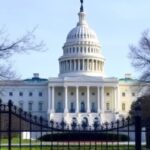As the U.S. government shutdown stretches into its third week, millions of low-income Americans are on the brink of missing their November SNAP benefits, potentially crippling household grocery spending and sending shockwaves through local economies. The Supplemental Nutrition Assistance Program (SNAP), which supports over 41 million people nationwide, faces unprecedented disruption as federal funding and administrative functions grind to a halt.
- SNAP Funding Freeze Hits Hardest in Rural and Urban Food Deserts
- Shutdown Timeline Exposes Fragile Federal Nutrition Safety Net
- Grocery Retailers Brace for Sharp Decline in Consumer Spending
- Voices from the Frontlines: Families and Experts Sound Alarm on Food Insecurity
- Path Forward: Negotiations Intensify as States Prepare Contingency Plans
SNAP Funding Freeze Hits Hardest in Rural and Urban Food Deserts
The immediate fallout from the government shutdown is most acute for SNAP recipients in vulnerable communities. In states like Texas and California, where participation rates exceed 15% of the population, families relying on these food assistance payments could see delays or outright cancellations by mid-November. According to the U.S. Department of Agriculture (USDA), which oversees SNAP, the program’s electronic benefit transfer (EBT) cards are loaded monthly, but without federal employees processing claims and issuing funds, the pipeline is at risk of drying up.
Consider the case of Maria Gonzalez, a single mother in Los Angeles. “We’ve been budgeting every dollar from our SNAP benefits to cover groceries for my two kids,” she shared in an interview. “If this shutdown drags on, we’ll be skipping meals or turning to food banks that are already overwhelmed.” Gonzalez’s story echoes thousands across the nation, where SNAP benefits average about $250 per person monthly, directly fueling grocery spending at supermarkets and corner stores.
Statistics paint a grim picture: A 2023 Center on Budget and Policy Priorities report estimates that SNAP injects $120 billion annually into the economy, with every dollar spent generating up to $1.50 in local economic activity. In rural areas like Appalachia, where food deserts limit access to fresh produce, the shutdown could exacerbate malnutrition rates, already hovering at 14% among children in these regions per USDA data.
- Key Impact Areas: Urban centers like Chicago and Detroit face EBT system overloads without USDA tech support.
- Rural Challenges: In the Midwest, farmers’ markets that accept SNAP tokens report potential 20-30% drops in business.
- Demographic Hits: Seniors and disabled individuals, comprising 20% of recipients, are particularly at risk without timely recertifications.
Advocacy groups like Feeding America warn that even a one-month delay could push 5 million households into acute food insecurity, reversing gains made post-pandemic when SNAP enrollment surged 40%.
Shutdown Timeline Exposes Fragile Federal Nutrition Safety Net
The current government shutdown, triggered by partisan disputes over border security funding, marks the longest in modern U.S. history, surpassing the 2018-2019 episode that lasted 35 days. That previous shutdown delayed SNAP payments for January 2019, affecting 10 million people and leading to a 15% spike in emergency food assistance requests, as documented by the Government Accountability Office (GAO).
This time around, the stakes are higher. Congress failed to pass a continuing resolution by October 1, halting non-essential federal operations. The USDA, operating on contingency funds, has enough to cover October’s benefits, but November’s $10 billion allocation hangs in the balance. “We’re in uncharted territory,” said USDA spokesperson Mark Price in a recent briefing. “Without congressional action, states will have to dip into reserves, but those are finite.”
Historical context reveals SNAP’s resilience—and vulnerabilities. Established in 1964 as the Food Stamp Program, it evolved into SNAP in 2008 amid the financial crisis, providing a lifeline during economic downturns. Yet, shutdowns expose its reliance on federal bureaucracy: From eligibility verifications to fraud prevention, all grind to a halt. A 2022 GAO audit highlighted that 25% of SNAP offices lack backup staffing for crises like this, leaving applicants in limbo.
- Week 1 (Oct 1-7): Initial furloughs hit 8,000 USDA employees, delaying routine audits.
- Week 2 (Oct 8-14): States report rising call volumes to SNAP hotlines, unanswered due to staff shortages.
- Week 3+ (Oct 15 onward): Projections show 30% of benefit issuances at risk if no resolution by October 31.
Politicians on both sides are pointing fingers. House Speaker Mike Johnson blamed Senate Democrats for stalling a bipartisan bill, while Senate Majority Leader Chuck Schumer accused Republicans of holding the economy hostage over unrelated issues. Amid the rhetoric, SNAP recipients bear the brunt.
Grocery Retailers Brace for Sharp Decline in Consumer Spending
The ripple effects of disrupted SNAP benefits extend far beyond individual households, threatening the retail sector that depends on this steady stream of revenue. Grocery chains like Walmart and Kroger, which redeem 40% of SNAP transactions, anticipate a 10-15% drop in sales from low-income shoppers if November payments falter. “SNAP is the backbone of our community stores,” said Kroger CEO Rodney McMullen in an earnings call. “Any interruption hits our bottom line and our employees hard.”
In smaller towns, the impact is magnified. A study by the Food Research & Action Center (FRAC) shows that in areas where SNAP accounts for over 20% of grocery sales, local economies could lose up to $500 million monthly. Take Flint, Michigan, where post-water crisis recovery relies on federal aid: Store owners report pre-stocking shelves in anticipation, but shelves may remain empty if benefits don’t arrive.
Grocery spending patterns underscore the urgency. SNAP dollars are spent within days of issuance—95% within the first week, per USDA tracking—boosting perishable goods sales and farm-to-table supply chains. Without them, wholesalers face spoilage losses, potentially driving up prices for all consumers. The National Grocers Association estimates a nationwide economy-wide hit of $18 billion if the shutdown persists through November, factoring in job losses at 50,000 retail positions.
Interviews with industry experts reveal proactive measures: Some chains are partnering with nonprofits for emergency vouchers, while others lobby for state-level waivers to extend benefits. However, legal hurdles abound, as federal law ties SNAP to congressional appropriations.
Voices from the Frontlines: Families and Experts Sound Alarm on Food Insecurity
On the ground, the human cost of the government shutdown is palpable. In New York City, where 1.8 million residents use food assistance, soup kitchens are seeing a 25% uptick in visitors. “People are rationing what little they have,” said Antoinette King, director of a Harlem food pantry. “SNAP isn’t just money; it’s dignity and stability.” King’s organization, already serving 500 meals daily, fears doubling that load without federal support.
Experts echo these concerns. Dr. Elaine Waxman, vice president at Feeding America, told reporters, “This shutdown could undo years of progress in reducing child hunger, which dropped 30% since 2019 thanks to expanded SNAP access.” Citing CDC data, she noted that food insecurity correlates with higher rates of diabetes and mental health issues, disproportionately affecting Black and Hispanic communities.
Broader economy analyses from the Brookings Institution project that prolonged disruption might shave 0.2% off GDP growth in Q4, as reduced grocery spending cascades into supplier layoffs. Economists like Mark Zandi of Moody’s Analytics warn of a “vicious cycle”: Hungry families miss work, productivity dips, and recovery stalls.
Grassroots efforts are mobilizing. Organizations like the National WIC Association are cross-advocating, while petitions on Change.org have garnered 200,000 signatures urging Congress to prioritize nutrition funding. Personal stories flood social media, amplifying calls for action.
Path Forward: Negotiations Intensify as States Prepare Contingency Plans
As bipartisan talks heat up in Washington, the clock ticks for SNAP recipients. White House officials hint at a possible deal by late October, tying shutdown resolution to a $6 billion border package. Yet, skeptics like Sen. Bernie Sanders argue for standalone food assistance legislation to shield programs like SNAP from future political brinkmanship.
States are stepping up: California Governor Gavin Newsom announced a $100 million emergency fund to bridge SNAP gaps, while Texas explores vendor reimbursements. Federally, the USDA has activated limited overtime for essential staff, but experts say it’s a band-aid on a gaping wound.
Looking ahead, this crisis underscores the need for SNAP reforms, such as multi-year funding or automated benefit extensions during emergencies. Advocacy coalitions plan nationwide rallies, pressuring lawmakers to act. If resolved swiftly, the economy could rebound; otherwise, the November shortfall might echo into 2025, deepening divides in an already fragile recovery. For millions, the message is clear: Hunger waits for no negotiation.









